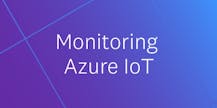Automotus enables cities and businesses to analyze curbside activity, such as rideshare utilization and parking tickets, in order to increase revenue while minimizing traffic and congestion. The core of Automotus’s business relies on IoT devices, and if those devices fail, their business grinds to a halt. It’s therefore essential for Automotus to have total visibility into the health and performance of these devices, as well as the downstream applications and services that support them.
Harris Lummis, CTO and Co-founder of Automotus, recognized this need and began the search for a comprehensive monitoring solution for Automotus’s growing IoT system.
Before he found Datadog, Lummis was concerned about Automotus’s manual and reactive approach to monitoring. Their team was unable to collect important hardware metrics, such as network throughput, I/O load, and memory, which meant they often missed the first signs of degraded device performance. If their devices stopped sending messages, they were forced to SSH into the system and sort through logs by hand, which was an extremely time-consuming process that required all hands on deck. They also didn’t have visibility into the management and backend services that are crucial to their system, such as AWS IoT Core.
These problems were compounded by the absence of a centralized platform to view and analyze this data in context. The resulting blind spots stymied their troubleshooting process, leaving them to cross their fingers that nothing would go wrong.
Naturally, Lummis began to wonder: If troubleshooting was this hard while the product was still in alpha, how would they manage when it actually launched?
Discovering Datadog
In order to jumpstart their search for an appropriate monitoring solution, Automotus decided to contact Trek10, a Datadog Gold tier partner and an AWS-focused service provider with specialized expertise in next generation infrastructure. It was through their conversations with Trek10 that Automotus first realized how Datadog’s minimal overhead, low-maintenance approach to IoT monitoring could transform their engineering organization.
Datadog’s IoT Agent, together with IoT integrations with technologies such as AWS IoT Core, would allow them to view critical performance data from their NVIDIA Jetson-based devices alongside metrics, traces, and logs from their entire IoT ecosystem. Additionally, Datadog’s unified platform would allow them to eliminate blind spots and streamline their troubleshooting process, freeing up their engineers to spend more time building and enhancing their core product.
“ We searched long and hard for an IoT monitoring solution that was specifically built for resource-constrained environments. Datadog’s IoT Agent collects real-time metrics and logs from our devices without adding overhead, so our engineering team can get critical visibility into every deployment.”
Harris Lummis
Founder and CTO, Automotus
With the help of Trek10, Automotus was able to onboard and ramp up with Datadog in no time. Trek10 deployed the Datadog IoT Agent to Automotus’s devices and enabled the integrations for the AWS services they rely on, giving them unprecedented visibility into their entire system. When their first outage occurred, it became clear how important Datadog would be in establishing scalable incident response best practices that would serve them for years to come.
Since then, Datadog has provided a holistic monitoring platform for Automotus, which includes:
Robust Integrations with IoT Technologies:
Datadog’s integrations with key IoT technologies, such as AWS IoT Core, PostgreSQL, and RabbitMQ, enabled Automotus to get immediate visibility into the services that are crucial to their system. These integrations come equipped with out-of-the-box dashboards, where Automotus engineers can see key connectivity, messaging, and error metrics at a glance. If they notice concerning activity, such as an anomalous spike in queued messages or a sudden dip in active connections, they can pivot seamlessly to other parts of the platform, such as the Log Explorer and Infrastructure Monitoring, in order to investigate the issue further.
Visibility into Devices Living at the Edge:
Trek10 helped Automotus build custom dashboards for device-level data collected by the IoT Agent. By viewing crucial system and performance metrics alongside logs and events, they are now able to get a high-level overview of device health and activity across their fleet. They can also use standardized tags such as ‘location’ to filter their data and isolate problems with specific subsets of devices, whether they’re running in California or Italy.
An Intelligent Alerting Infrastructure:
IoT systems generate enormous volumes of data, which is often transmitted over unreliable network connections. This makes it difficult to implement an alerting infrastructure that doesn’t generate false positives or let real issues fall through the cracks. With Datadog, Automotus could set up sophisticated alerts for their entire fleet of devices, as well as their downstream services, ensuring that they only receive alerts for sustained, legitimate failures. They can also leverage machine learning-based features such as anomaly and outlier detection to automatically surface unusual activity that they may not have anticipated.
With Datadog, Automotus was able to increase their release velocity while scaling up their entire IoT fleet. Automotus currently deploys new firmware three times a week, and Datadog Deployment Tracking enables them to monitor the performance of each deployment in real time. Now, Automotus can be confident in the knowledge that they have the tools they need to move their business forward as quickly as possible—without any maintenance or visibility tradeoffs.
“ We’ve been thrilled with the performance of the Datadog IoT Agent—it has lifted a huge burden from our team’s shoulders. Datadog gives us a single source of truth for diagnosing errors and even helps us proactively identify issues.”
Harris Lummis
Founder and CTO, Automotus


